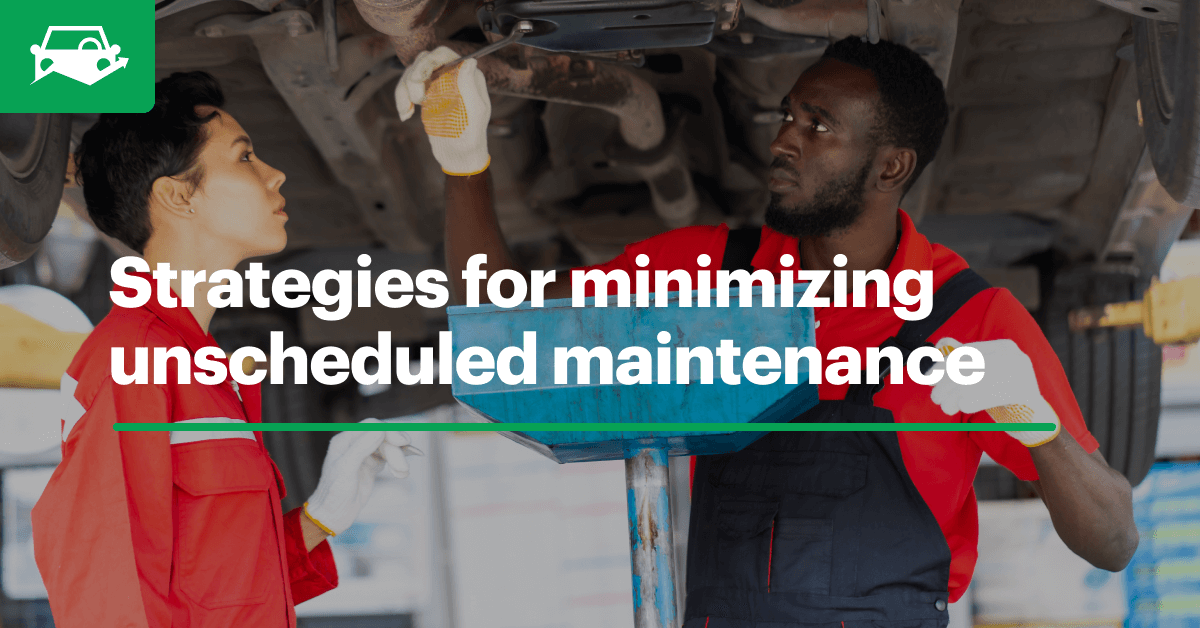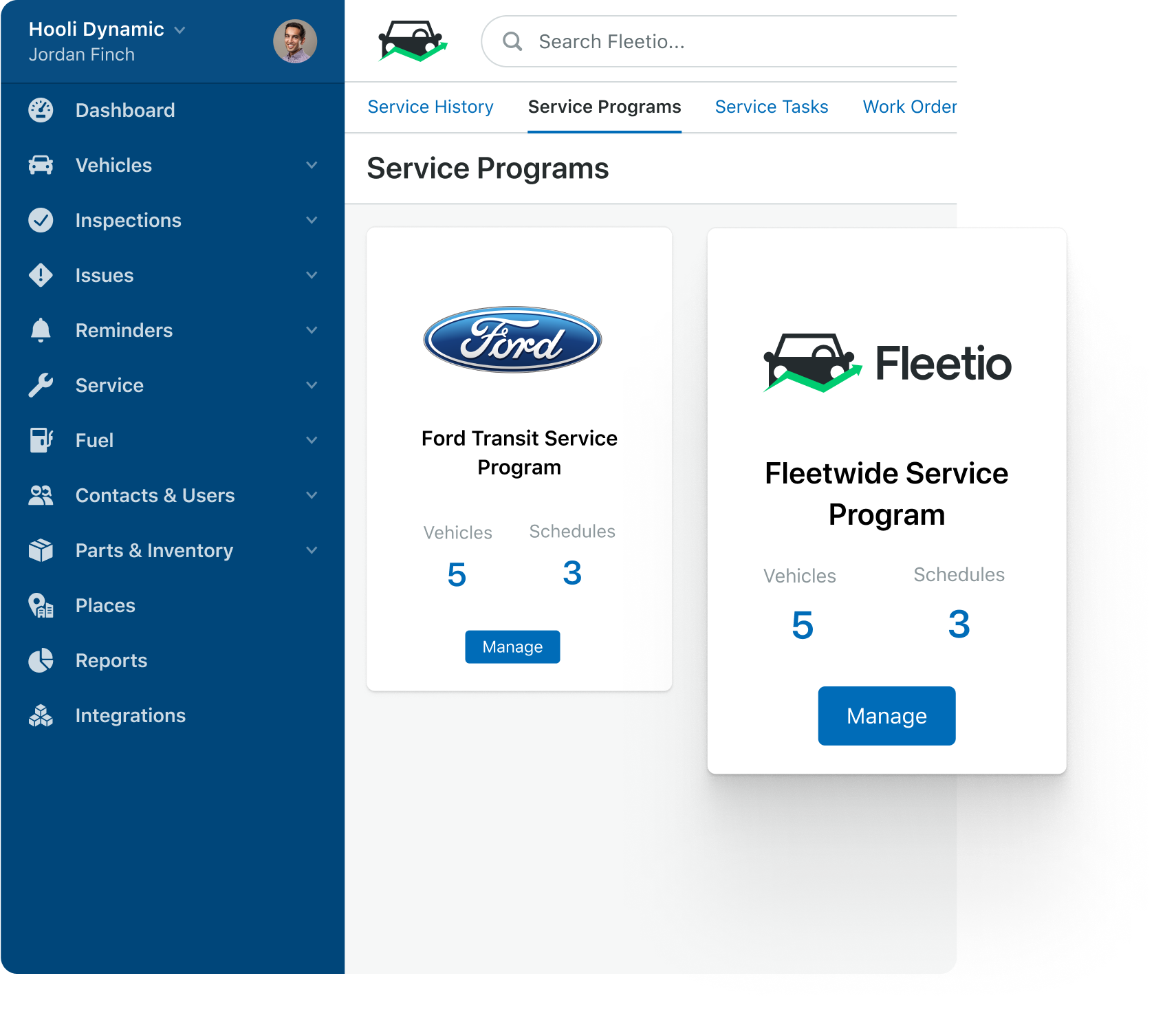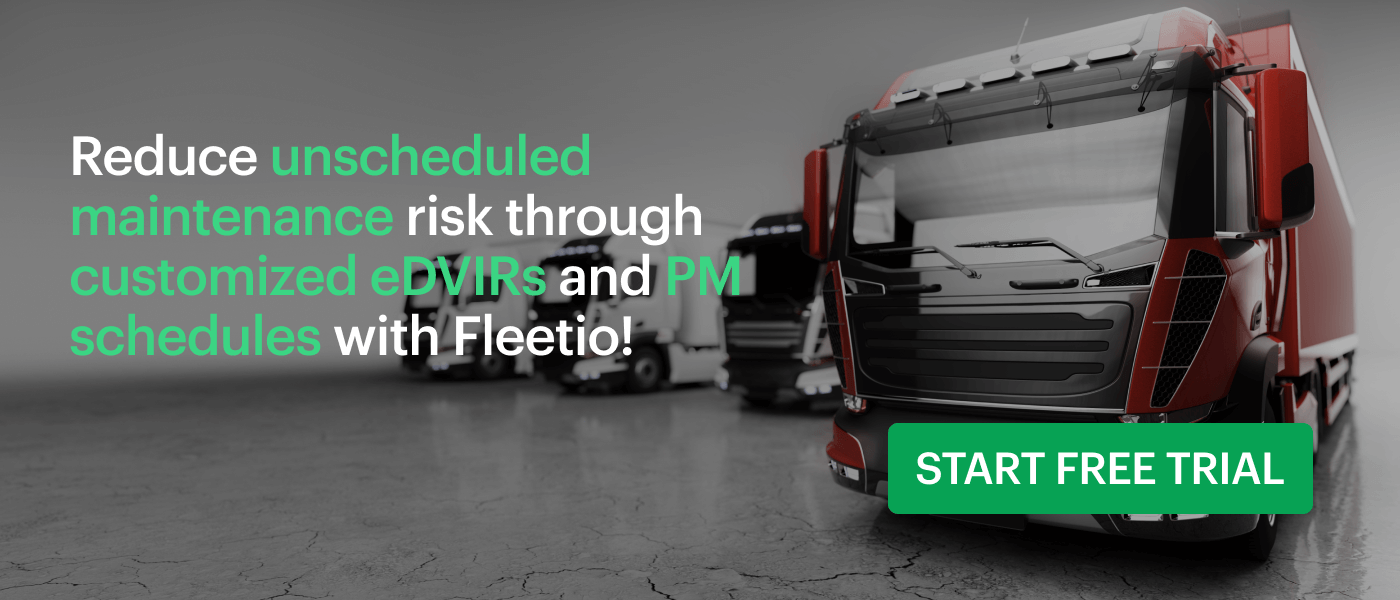Unscheduled maintenance (UM) happens—but adherence to a strong preventive maintenance (PM) schedule and knowing the difference between UM types allows you to put strategies in place to mitigate downtime.

Being Proactive is the Best Way to Avoid UM
UM is part and parcel of the fleet industry. While UM is unavoidable, you can greatly reduce risk through proper PM scheduling and adherence and daily vehicle inspection reports (DVIRs). However, when routine maintenance is not being carried out as and when needed, the chances of UM increase.
More to PM Scheduling Than Meets the Eye
There’s more that goes into accurate PM scheduling than just the manufacturer’s suggested service intervals. Vehicle age and mileage, and route, payload and geographical location all play a role in vehicle wear and tear and part replacement intervals. DVIRs are also an integral part of PM scheduling and can show recurring issues that could potentially become larger problems.
Keeping completed vehicle service histories is another factor in creating a strategic PM schedule, as service histories help avoid repeating repairs and allow for predictive maintenance. Not only does having the full service history for your vehicles help give you a clearer picture of what each vehicle’s PM schedule should look like, it also shows what UM might arise when schedules are not met.

For fleet managers still using the old pen, paper and filing cabinet system, however, keeping track of all this data may not be viable. That’s where fleet management software comes in. A robust fleet management software can centralize data so that fleet managers can use it to create PM schedules that best meet their fleet’s needs. And with mobile capabilities, drivers can submit customized, electronic DVIRs (eDVIRs) in real-time with supporting comments, photos and documents.
UM Severity Levels Vary
Corrective Maintenance
Corrective maintenance is UM done to correct an issue causing problems, but which doesn’t need to be performed for an asset to continue being used (i.e. a/c malfunction, low-flow coolant leak, etc). Identifying and scaling corrective maintenance issues can better help you plan for them before they arise. Decide which corrective maintenance issues should be assigned as high, medium or low priority issues and have a strategy in place to minimize downtime and reduce the likelihood of having to reallocate labor hours.
Here are some considerations when making a plan for corrective UM:
-
Make a priority hierarchy: As mentioned before, make a hierarchy of corrective maintenance issues from low to high
-
Build a strategy for each priority status: Have a plan in place for each priority level to better delegate maintenance schedules and work orders to minimize downtime
Pro tip: Service history data can be a great tool to utilize for instances of UM and resulting repair time -
Disclose the need for communication: Make sure drivers are able to communicate in real-time when a UM issue arises so service orders can be placed in a timely manner
Pro tip: Fleet management software that offers a mobile application allows drivers to quickly and easily report issues while in the field
Reactive Maintenance
Reactive maintenance is UM that takes a vehicle completely out of service for repair. When it comes to reactive maintenance, there are really only two options: fix it or don’t. If you’re not immediately downsizing your fleet and cost analysis doesn’t find that repair outweighs replacement, then you’re basically forced to react by repairing the vehicle.
Here are some considerations when making a plan for reactive UM:
-
Get creative: Ideally, a spare vehicle is the best “Plan B,” but that’s not always an option. Using fleet management software with telematics integrations, you can pull route, job, and assignment data from all fleet vehicles to get creative with solutions
- For example: An Amazon delivery truck on Route A breaks down. The driver uses their mobile app to create and report the issue. The fleet manager already has a plan in place based on route data and knows that if Route B and Route C split Route A at certain addresses, each driver will finish with only about 10 minutes of overtime. The Fleet manager dispatches the drivers of Routes B and C to Route A driver’s location to gather the merchandise and submits a service order:
-
Assign to a technician: If your repairs are done in-house, assigning a technician specifically to handle reactive UM is worth looking into. Reserving five-10 hours of on-call time per week for an off-the-clock tech to come in when a reactive UM issue arises might be a good place to start
-
Again, communication is key: It’s imperative drivers be able to communicate reactive UM issues as soon as possible. Have your drivers use their mobile app to report any issue in real-time, anywhere they have service
Stay Informed From Start to Finish
When UM issues arise, real-time communication and a plan of action are vital to minimizing downtime, but the cycle doesn’t end there. Until the vehicle in question is operable and road-ready, you’ll want to be able to track its progress and stay informed throughout the service process. Keep track of vehicles serviced in-house or through a third-party service provider with fleet management software. Stay informed every step of the way and receive notifications of any problems that may arise, including insufficient inventory or secondary damage found during the initial repairs.
You don’t have to be a victim of UM. Instead, reduce your risk with eDVIRs and strong PM scheduling and adherence and overcome unavoidable UM issues through strategic planning by leveraging data from fleet management software.
Find out how Fleetio can help you minimize unscheduled maintenance. Start your free trial or request a demo of Fleetio today!




